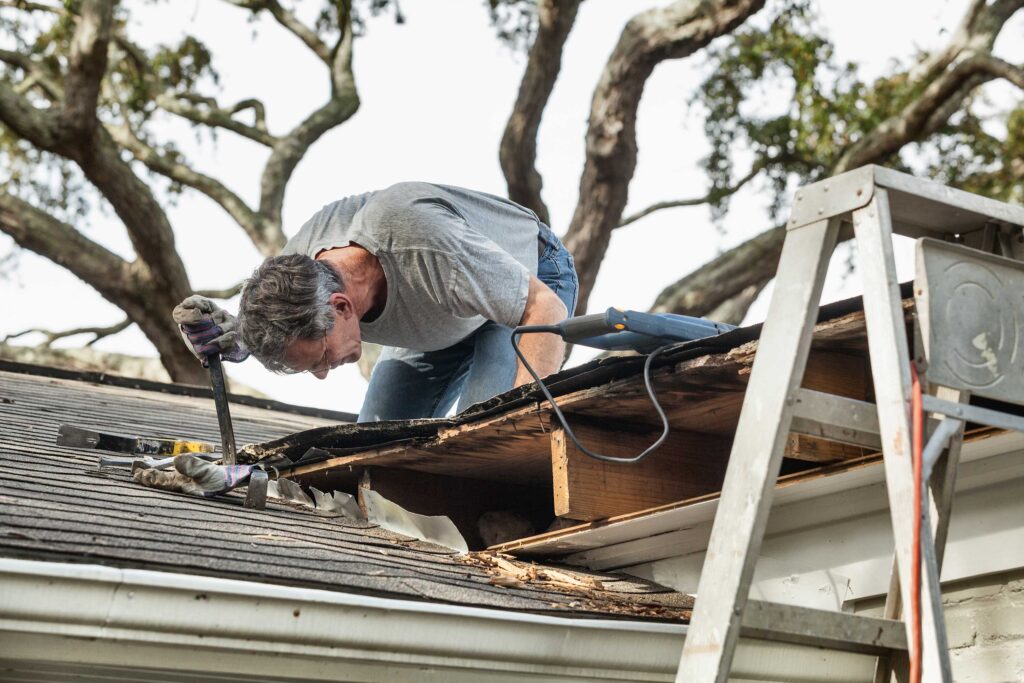
Pittsburgh’s weather is notorious for its sudden and severe storms. When a storm hits, it can wreak havoc on your home, especially your roof. Knowing how to handle the situation promptly is crucial. This guide covers what steps to take after a storm damages your roof, focusing on emergency roofing services to mitigate damage and ensure your home remains safe. By acting quickly and following these steps, you can effectively minimize the impact of storm damage and protect your property.
Steps to Take Following Pittsburgh Storm Damage
1. Assess the Situation Safely
Your safety is the top priority. Before you venture outside or inspect the damage, take a moment to ensure there are no immediate hazards:
- Check for Structural Damage: Approach cautiously if your home has sustained visible damage. Damaged walls, ceilings, or floors could be dangerous. Please stay away from these areas until a professional can check them out.
- Look for Electrical Hazards: Water and electricity don’t mix. If you suspect water has come into contact with electrical components, turn off the electricity at the main breaker. Avoid touching any affected systems or appliances.
- Be Mindful of Gas Leaks: A gas leak is a serious risk. If you smell gas, evacuate immediately. Contact your gas utility provider to handle the situation safely.
2. Document the Damage
Thorough documentation is vital. It will aid in insurance claims and help contractors assess repairs:
- Take Photos and Videos: Capture every bit of damage—roofs, walls, ceilings, and more. Detailed images and videos will serve as crucial evidence for your insurance claim.
- Make a List: List all damaged items and areas, including descriptions of the extent of damage. This list will be handy for both your insurance company and your repair contractor.
3. Contact Your Insurance Company
It’s time to get your insurance involved. The sooner you file a claim, the sooner you can start the repair process:
- File a Claim: Provide your insurer with all your gathered documentation. Include details in your description of the damage. Accuracy here speeds up the claims process.
- Follow Up: Stay in contact with your insurance adjuster. Track your claim’s status and ensure that all necessary inspections and approvals are completed.
4. Secure Your Property
Protecting your property from further damage is crucial:
- Cover Roof Leaks: Use tarps or plastic sheeting to cover leaks. Secure these coverings with ropes or weights. This temporary fix will help prevent further water damage until a professional can check it out.
- Remove Standing Water: If there’s water inside, act quickly. Use a pump or wet/dry vacuum to remove it. This step helps to prevent mold growth and additional structural damage.
- Protect Belongings: Move undamaged furniture and valuables to a safe, dry area. This prevents further loss and protects your possessions from additional harm.
5. Seek Emergency Roofing Services
A damaged roof requires immediate attention. Don’t wait—contact a professional:
- Contact a Local Roofing Contractor: Find a roofing company experienced in handling storm damage. A local contractor will understand Pittsburgh’s weather challenges and be able to respond swiftly.
- Schedule an Inspection: Have a professional inspect your roof. They’ll assess the damage and recommend repairs or replacements. A thorough inspection is essential for determining the next steps.
- Perform Temporary Repairs: Your contractor may perform temporary repairs. This could involve patching leaks or securing loose shingles. These measures help to prevent further damage until permanent repairs can be made.
6. Understand What to Do in a Roofing Emergency
In a roofing emergency, knowing the proper steps is crucial:
- Avoid DIY Repairs: While DIY might seem tempting, it can be risky. Climbing onto a damaged roof can be dangerous. Trust professionals to handle the repairs.
- Communicate with Your Contractor: Keep an open dialogue with your roofing contractor. Discuss the repair process, expected timeline, and any concerns you have. Clear communication ensures that all issues are addressed.
- Review the Work: Once repairs are completed, inspect the work. Ensure it meets your expectations and addresses all identified issues. Keeping records of repairs and costs is also crucial for future reference. Save all receipts and invoices!
7. Plan for Long-Term Repairs and Maintenance
After addressing immediate concerns, think about the future:
- Evaluate Repair Options: Work with your contractor to determine the best options for permanent repairs or replacements. Consider material quality, cost, and the impact on your home’s value.
- Schedule Regular Inspections: Regular roof inspections can prevent future emergencies. Schedule these to identify potential issues before they become significant problems.
8. Stay Informed and Prepared
Being prepared for future storms can make a significant difference:
- Monitor Weather Alerts: Keep track of weather forecasts and alerts. This helps you stay informed about potential storms and take action before they hit.
- Create an Emergency Plan: Develop a plan for your household. Include steps for storm preparedness, evacuation routes, emergency contacts, and a list of essential items.
MHI Roofing’s Final Steps for a Swift Recovery
Handling storm damage in Pittsburgh can be daunting, but you don’t have to face it alone. MHI Roofing is here to help with our comprehensive emergency roofing services. With over 40 years of experience, we understand the unique challenges Pittsburgh weather presents. Our team is ready to provide you with a thorough inspection and immediate assistance to address any storm damage.
Schedule a Free Inspection today to assess the damage and explore your repair options. At MHI Roofing, we’re committed to protecting what matters most—your home. Our dedicated professionals will guide you through every step, from temporary fixes to long-term repairs. Trust us to help you get back on track with minimal hassle and maximum efficiency. Reach out now to ensure your home stays safe and secure.
